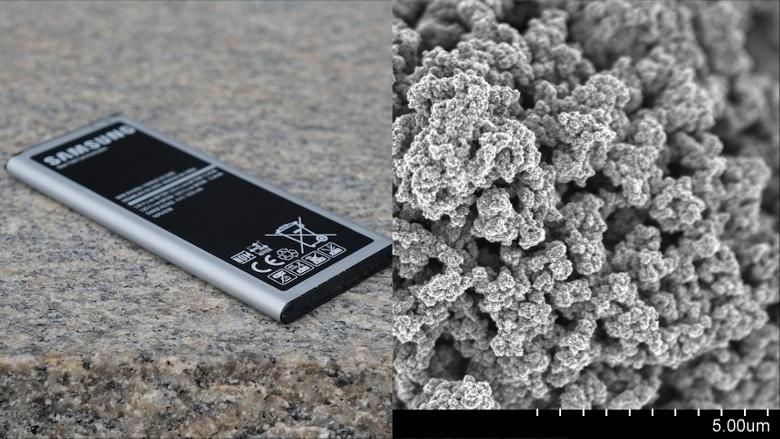Researchers have been working with graphene, carbon in the form of a single layer that can facilitate amazing energy capacity, for many years. They have yet to properly harness it on a large scale for use in batteries and solar cells.
Sure, you could run a bit of pencil graphite, pure crystalline carbon, on a piece of scotch tape and make graphene as easily as a child scribbles outside the lines. But keeping graphene in its thin, fragile form still proves a difficult task, especially for volatile uses such as relaying power.
Samsung, which holds the most patents on graphene technology, may have found a way to finally kick graphene into the proper gear for a battery — by using silica to shape it into balls.
Testing on graphene balls with lithium-ion batteries found that charging capacity increased, charging times decreased and charging temperatures were level. It’s projected that a battery made entirely of graphene balls could fully charge in 12 minutes, provide 45 percent more capacity than a conventional battery and stably operate at 60°C (140°F) without major deterioration. And these balls can be mass produced very easily.
So, will this lead to the end of all things lithium-ion in batteries? Well, if the chaebol pulls off commercialization successfully, competitors won’t likely be able to handle this technology unless it is filed as a standard essential patent with fair and relatively affordable licensing terms — in fact, the company has sent two applications at patent offices in South Korea and the United States. But it may have an interest in doing that, though, as the entire portable electronics industry, large and wide-ranging as it is, should be able sustain massive revenues for the company.
The Samsung Advanced Institute of Technology, Samsung SDI and Seoul National University’s School of Chemical and Biological Engineering published a joint report in Nature Communications.

